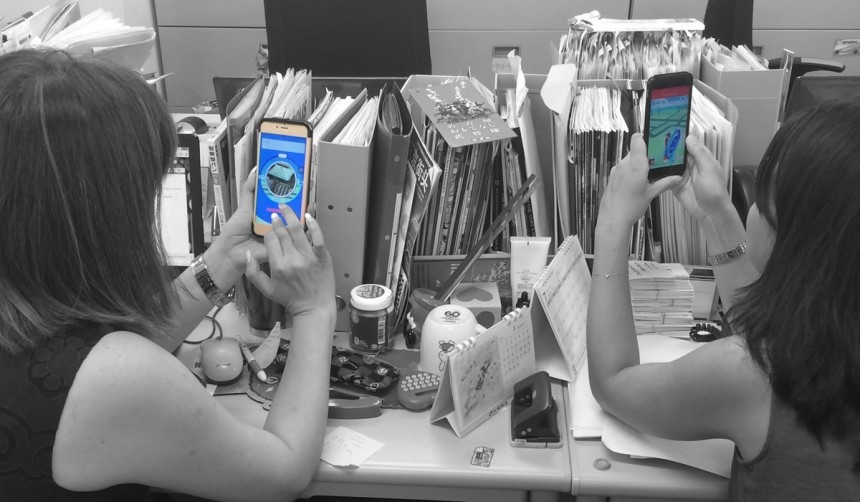
Over two decades after Nintendo’s Pokémon first took the world by storm, it’s back again—and considerably bigger than ever before. “Pokémon GO,” the sensationally popular free app available for both iOs and Android, has been downloaded internationally more than an estimated 75 million times since its July 6 launch.
Yet despite being the country where it all began, Japan had to wait while the rest of the world rediscovered their cities as realtime playgrounds for Pikachu et al. Further delays caused by crashing servers and the leak of a secret cross-promotion with McDonald’s only added to the suspense. Finally, more than two weeks after its initial launch in Australia, New Zealand, and the U.S., “Pokémon GO” arrived on Japanese shores.
As you may have expected, it was a staggering homecoming. According to a report by The New York Times, “Pokémon GO” was downloaded around 10 million times on the first day of its Japanese release.
Suddenly, the streets of Tokyo were were jammed with smartphone-toting Pokémon trainers eager to make up for lost time. Young, old, and everywhere in between, throngs of Tokyoites congregated in playgrounds, parks, and pretty much anywhere else they could sneak into in an effort to “catch ‘em all,” as the franchise’s motto famously commands.
If you’re one of the few who hasn’t tried it yet, here’s the gist of the game: players roam their environments in search of Pokémon, which they collect, train, and pit against others for local bragging rights and digital goodies. The app uses cutting-edge augmented reality (AR) to make creatures seem as if they’ve come to life, a feature which has likely helped catapult the game to its massive popularity.
Gameplay has been so absorbing that it’s caused accidents the world over, and Japan has been no exception. Since “Pokémon GO’s” launch in Japan incidents have included users falling down flights of stairs and trespassing into the Kyoto Imperial Palace, and the issuing of an official warning to avoid the Fukushima Disaster Zone while playing. (This was prompted by the discovery of Pokémon near areas damaged in the 2011 earthquake and subsequent disaster.)
In Tokyo, concerns for safety led the National Centre of Incident Readiness and Strategy for Cybersecurity to distribute printed warnings outside Shinjuku Station advising players to stay hydrated, pick up extra batteries for their phones, and avoid walking while playing the game.
For a family-friendly game, it’s certainly caused its fair share of controversy. Sure, you might interpret it as the next in a long line of signs that technology is turning us all into antisocial vegetables, ignoring the world around us in pursuit of a digital fantasy. While I don’t think we’re there yet—or that that’s necessarily a bad thing, in the right context—I admit to being taken aback when I spotted a passenger on the Fukutoshin Line simultaneously using two cellphones: one to check his e-mail and a second to hunt for monsters.
Still, there’s a considerable bright side to this recent phenomenon. Japan’s finance minister said he thinks the location-based app can help get people outside, exercising and interacting with people and places in more ways than usual.
He might be onto something. In my first hour of playing “Pokémon GO,” PokeStops—tagged locations that offer in-game items—helped me discover a handful of new things about my neighborhood, including a little onsen tucked away on a side street only steps from my house. On an evening run, I passed a crowd of smiling locals hanging out by the Miyoshoji River in hopes of catching a few extra Magikarp or Horseas before heading home. And friends have already mentioned how they’ve shed a few unwanted pounds while out on the hunt for some new feral friends.
With a piece of wearable tech called Pokémon GO Plus launching in September, it’s unlikely this new trend is going away anytime soon. If you haven’t already, give it a try. Just watch where you’re going, all right?







